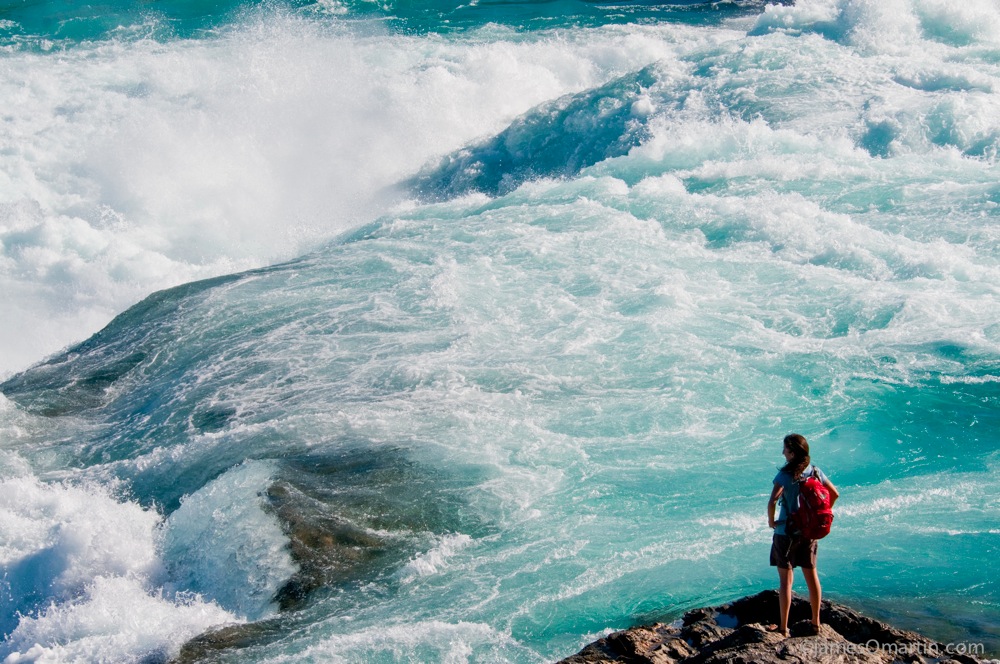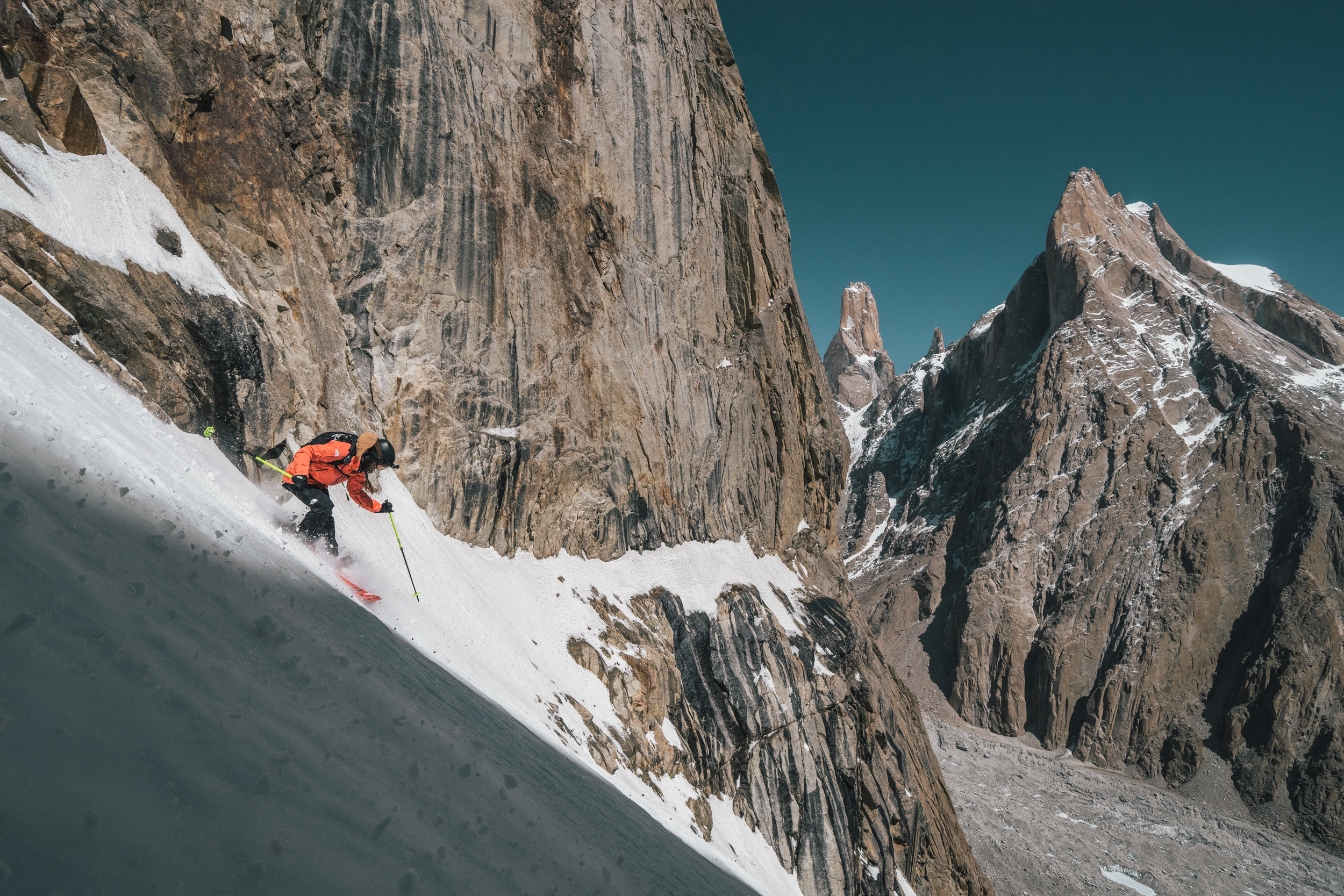
A Patagonia Without Dams: Q&A With James Q. Martin and Chris Kassar of Rios Libres
Freeflowing rivers are hard to find these days, and of the few that run from source to sea, completely undisturbed, many of them are threatened by encroaching energy interests. Such is the case on the Baker River in Chilean Patagonia. In 2010 a team of adventurers, scientists, photographers and writers went to this threatened region, to document its beauty and what risks to be lost in the face of a proposed dam project. Chris Kassar and James Q. Martin, along with longtime guest Timmy O'Neill and writer guest Craig Childs, used their Rios Libres expedition to paint a portrait of the Rio Baker, resulting in the creation of Power in the Pristine, screening at this year's festival.
Recently, the issue of damming the Rio Baker reached a critical mass: on May 9th, the Environmental Impact Assessment for the destructive HidroAysén project in Patagonia was approved, despite flaws and irregularities in the entire process. Groups like International Rivers are working hard to raise international awareness about the issue and put pressure on the Chilean government to stop this project that 74% of the population doesn't want.
We caught up with Kassar and Martin to learn more about their project and what the rest of the world can do to take action and support a Patagonia without dams.
Mountainfilm How/why did you get involved in Sin Represas (Patagonia Without Dams)?
James Q. Martin: In 2000 I drove down the length of Chile in search of wild places and to take breathe taking photos in lands that where not industrialized. Jump 10 years later and I read about the proposal to dam Chile most voluminous and wild rivers.
I knew then that I could help organize a power packed team of passionate people to go to this remote region of Patagonia and bring back info on several levels to let the world know what could be lost. Although I was overwhelmed by the amount of work, Chris really helped make it all come together.
Chris Kassar: When Q first told me about the dam proposal, I was intrigued and did a little research to learn more. Once I saw the photos and learned what was at stake, I couldn’t sit back and watch as one of the wildest places left on the planet was drowned. I knew there was something we could do. I’ve been an activist for a long time and I know that if you can get people to really know a place and care about a place they will defend it and work to protect it. That’s what we’re trying to do – take our experience spending time in Patagonia and bring people into it so they’ll care enough to make some noise.
I knew we were going up against big business – people with lots of power and money – but I took inspiration from the folks who stood up and defended the Colorado River. If not for those few who decided to make noise decades ago, the entire Grand Canyon would now be under water.
Which organizations have you worked with on this campaign and what has the international level of support been like?
Q: Several organizations have been extremely helpful in our work on this issue. NRDC and International Rivers, both based in the US, have provided us with a lot of guidance in terms of policy and understanding the intricacies of the issues. Patagonia Sin Represas (Patagonia without Dams), this activist organization started in Chile by the people and has worked tirelessly to protect these wild lands. They have been instrumental in providing information, setting us up with locals to talk to and have excellent about keeping us up to date as things happen on the ground in Chile. In addition to NGOs, there are companies like Patagonia - who have devoted tons of resources to the issue and helping voice the opposition of the Chileans. It has been a wild experience fighting for these free flowing rivers and the outdoor industry has really supported us and help make it happen – our project was funded by Patagonia, Chaco, Osprey Packs, CLIF Bar, & Kathoola.
This past weekend, there were solidarity actions held around the world. Why do you think certain movements, like this one, garner such a level of international exposure?
CK: Over 74% of Chileans do not want to see these pristine rivers destroyed by dams. Over the past couple weeks, we have seen many of these people demonstrating and protesting – some even getting beaten and jailed to defend their land and their beliefs. I think this fact – that the people who call Patagonia home are against the proposal and are willing to risk their safety to defend it – has been a large factor in garnering international attention. Many of us have been inspired by the courage of the Chilean people and we want to help give voice to their opposition.
Now that the decision to move forward with the dam project has been made, what can people do?
CK: It is true that just last week a decision was made that would result in dams being placed on the Baker and Pascua rivers, but the fight is far from over. There is still a long way to go before the dams actually go in and there is a lot we can do in the meantime in terms of continuing to make noise and raise awareness.
Q: People can contact the Embassy of Chile and let them know that there where serious problems with the environmental review process and the project should have not been approved. Over 74% of Chilean people do not want these dams to happen, the people want the Chilean Government to seek alternative means to energy independence. The government is not listening to the people and respecting the democracy of the people. You can check out our website for the most recent actions associated with the campaign - rioslibres.com.
Consul General of Chile in San Francisco
870 Market Street, Suite 1058,
San Francisco, California 94102
Telephone:+1(415) 982 7665
Fax: +1(415) 982 2384
email:
What are lessons that we can learn from the dam project in Chile and apply here at home?
CK: The lessons we have learned from the tragedy at Glen Canyon have made many of us in the Southwest unwilling and unable to stand by and allow the same mistakes to be made again, even in remote regions that are thousands of miles away. Despite the geographic distance between where we lay our heads and Patagonia, our connection to these rivers is strong and the need to stand up for them remains close to our hearts.
How do you inspire others to be a catalyst for positive change?
Q: It’s a hard question to answer and maybe even harder to make happen. But I feel we can inspire through education and actions. By encouraging people to pay attention to issues in their own back yard and to voice those concerns, we will ultimately have a global impact for good. One thing I have really learned from this project is that you can do something about the things that bother you and you can voice those concerns and have an impact for the better.
CK: It’s true what they say – that actions speak louder than words. I never consciously think, “I’m going to inspire someone today.” But, what I’ve come to find out is that just by being me and living the only way I know how to live – I end up planting a seed that inspires some people to seek to create positive change. They may create changes on a small scale in their own daily lives or may think more globally and go out to do something big… Either way, it’s awesome and really has more to do with what they choose to do than with me.


